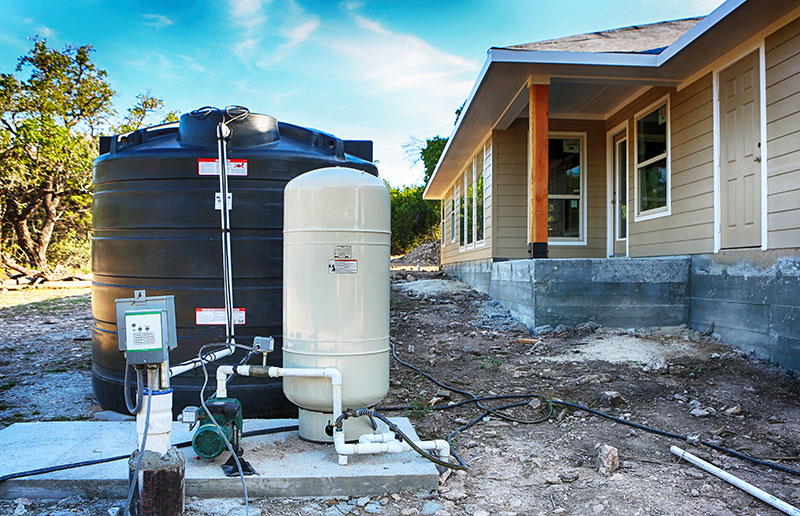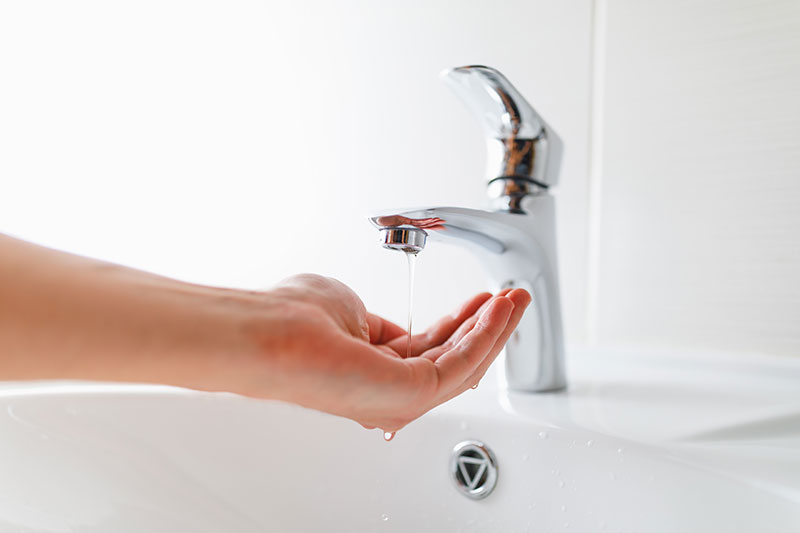Advertisement
Water is said to be an indispensable need for every household used for a variety of purposes. Although plumbing problems present a great deal of inconvenience to one’s day-to-day life, most water issues are an inevitable part of homeownership. If you’re receiving your water supply from a nearby well, fixing your plumbing problems even has its own set of challenges as you’re obtaining your supply from an unconventional source of water.
In residential well water systems, low water pressure is said to be a common problem. If you’re experiencing this right now and have no idea about its root cause and the possible solutions to your predicament, you’ve come to the right place.
How Well Water Supply Differs From Traditional Water Supply
In a municipal water system, your water supply is connected to the city’s entire water supply along with other residents. Before reaching your tap, the water has already been treated through various steps and has undergone a series of processes. The case is precisely the opposite when it comes to using a well water system, as you’re responsible for sourcing, connecting, and treating the water flowing into your home.
Since the well water system isn’t under your local government’s care, issues and concerns involving your home water source are your own business. Therefore, it’s your responsibility to control your water quality and treatment which are necessary to prevent contamination. Thankfully, having a well water system still offers numerous advantages, including cheaper water costs, autonomy, and reliability.
Importance Of Treating Well Water
According to the Centers for Disease Control and Prevention (CDC), more than 15 million American households source their water supply from private wells. To obtain potable water for household purposes, water treatment is deemed necessary. Experts believe that well water poses far more challenges in ensuring your family gets safe, healthy, and contaminant-free water. It’s because well water coming from the ground may contain pollutants and hazardous substances that can leach into your supply.
Heavy metals, fluoride, nitrate, and nitrite are a few toxic chemicals said to be present in most well water systems. They come from animal waste, human sewage, and chemical fertilizers that travel deep in the ground and possibly reach private wells like yours. These chemicals may contaminate your water and bring with them health problems when drank.
Common Causes Of Low Well Water Pressure
Before calling licensed professionals for help, it’ll be a valuable skill for homeowners to learn basic low well water pressure troubleshooting first. This way, you can check the problem with your well water system yourself and assess if you’ll have to call the plumber to end your low well water pressure worries once and for all.
With these in mind, here are the seven most common causes of low water pressure in your home’s well water system and what you can do about it:
- Increased Water Needs
Since the water pressure coming from the well is low, you should find the cause of low well water pressure by tracing all your well water system components, from the faucets up to the pressure tank. If one of these components isn’t functioning as it should be, your home well water supply will be affected.
However, if all the parts of the well water system are in good shape and working correctly, it’s time to look at your water consumption. During warmer weather, people, animals, and plants are believed to need more water to combat the increase in temperature and cool themselves for relief.
If your well water consumption is consistently high, it may be better to install an efficient well water system that offers maximum water harvest and storage without the possibility of overpumping. This can be accomplished with the help of well water solutions from providers like https://www.eppwellsolutions.com/ and others that offer similar well water solutions in the market.
- Low Flow From The Well Pump
The well pump is an essential component of the well water system responsible for extracting well water and directing it to the rest of the system. Also, it determines the water’s flow rate traveling through your system, which is said to be at optimum rates at around 5 to 20 gallons of water per minute.

Because of its essential role in delivering water, you should check the well pump among other components to confirm if a malfunctioning pump causes the pressure problem. Here are some potential solutions to low well water pressure related to the well pump:
- Check the pump’s pipes for signs of clogging. Sediments and minerals can build up on the pipes connected to the well pump, thus impairing the water pressure. Thus, it’s recommended to check the pipes connected to the well pump for any possible clogging and remove them.
- Consider installing a constant pressure valve. Your well water supply is consistent regardless of on-and-off use thanks to the well pump and pressure tank. However, these components also experience wear and tear over time, so you can install a new constant pressure valve to help maintain consistent water flow and pressure.
- An additional pressure tank may help. You’ll usually notice pressure fluctuation on your supply during peak hours. This standard pressure system depends on how the pressure tank fills and dispenses water. To increase the drawdown capacity of water and reduce erratic pressure fluctuations, adding a new pressure tank or replacing your existing pressure tank with a larger one can make a difference.
- Insufficient Water From The Aquifer Region
Have you ever wondered how deep well water is sourced? Under the ground, a layer of water-bearing permeable rock and soil, called the aquifer, is saturated with groundwater where 30% of the world’s fresh water supply is said to be present.
The aquifer region is a large depository of groundwater that isn’t in use. When it rains, water flows down and gets filtered by porous, semi-permeable rocks and soils before being deposited deep into the aquifer region.
The role of your well water system is to pump out water located deep underground using high pressure. However, if your system is already working with a high-pressure setting and you’re still not getting enough water supply at home, a potential reason could be the insufficient amount of water in the aquifer where your private well water system is located.
Before building a home water harvest and storage system, the importance of gathering enough information about your local water source can’t be overstated. Unfortunately, numerous places globally, like the United States, are low on water supply including those stored in aquifers.
The availability of well water from your aquifer depends on the following factors:
- Size of the aquifer,
- How long water is being drained from the aquifer, and
- Amount of precipitation surrounding the aquifer’s location.
- Bad Pressure Switch
The standard water pressure used in households is believed to range from 40 to 60 pounds per square inch (psi). In your case, the water pressure goes lower than the normal range. While you may not be well aware of its existence, the pressure switch plays a vital role in ensuring the right pressure of water flowing in and out of your system.
The pressure switch signals the well pump to enable or disable pumping through its cut-in or cut-off pressure settings. If the pressure switch fails to do its job, the pump won’t work at all, keeps spinning in cycles, or generates weak water pressure. Have a look at the pressure switch and check if yours is failing.
- Clogged or Stuck Gate Valves
Every component of the well water system is essential to one another. If one of them malfunctions, other parts will be rendered useless. Aside from the well pump and pressure switch, you should also pay attention to the gate valves.
Essentially, gate valves are a type of valve with a twist-type handle located on its top. It’s responsible for allowing or restricting water flow. If your household well water system has been set up for decades already, you’ll often find gate valves as they tend to be present in older plumbing mechanisms.
If the gate valves are clogged or stuck, the water pressure is working fine right before it reaches the gate valves, but the obstruction is causing the water to flow weakly on the other side of the valves. In this case, either valve cleaning or replacement will solve the problem.
- Clogged Pipes And Fixtures
Pipes are present everywhere in a plumbing system, so it’s only fair to assume that low water pressure may be caused by piping issues. Case in point, clogged pipes. To confirm this assumption, you’ll have to take out a section of pipe individually and look for clogs due to dirt, rust, or sediment buildup. Keep in mind that you’ll most likely need a professional licensed plumber to do this.
Since well water flows into your filtration system as it is, you might find pipes near the pump and pressure tank more prone to clogging due to sediments like calcium, manganese, sand, sulfur, iron bacteria, and more. Cleaning your pipes will remove the disruption, but make sure to practice regular cleaning and maintenance moving forward to prevent clogging from happening again.
- Damaged Pressure Tank
To shield your well pump from rapid on-off cycling, it’s said that pressurized tanks serve as a valuable component of your well water system. The pressure tank contains compressed air at the top and water at the bottom. Here’s how a well pump and pressure tank work together to supply your plumbing fixtures:
- Well water enters the bottom of the tank because of the pump’s mechanism;
- As the water level rises, the compressed air at the upper part of the tank rises and is increasingly compressed;
- When the maximum level is reached, 40 to 60 psi mentioned earlier, the well pump shuts off;
- Once fixtures are turned on, the compressed air will push the stored water out; and
- When the tank pressure hits the minimum level, and the water drops to a predetermined level, the entire process repeats.
Therefore, if your pressure tank can’t participate in this well-oiled mechanism, the pressure being compressed and released from the container will be less than its usual amount. Typically, replacing the broken one with a new unit will do, but it’s still best to reach out to your contractor that can suggest a better approach.
Key Takeaway
To keep your well water system reliable and efficient in supplying well water, routine care and maintenance are paramount to its lifespan. In case you experience low water pressure as provided by your well water system, take a look at the potential causes listed above and make sure you resolve them as early as possible, as the system makes well water safe and usable for a variety of household activities.

